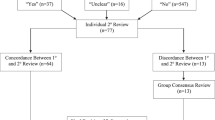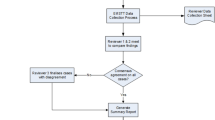Abstract
Objective:
To identify a risk profile for harmful medication errors in the neonatal intensive care unit (NICU).
Study Design:
A retrospective cross-sectional study on NICU medication error reports submitted to MEDMARX between 1 January 1999, and 31 December 2005. The Rao–Scott modified χ2 test was used for analysis.
Result:
6749 NICU medication error reports were submitted by 163 health-care facilities. Administering errors accounted for approximately one half of errors, and human factors were the most frequently cited cause of error. Patient age was not associated with an increased likelihood of an error being harmful (P=0.11). Error reports involving Institute for Safe Medication Practices (ISMP) High-Alert Medications, occurring in the prescribing phase of medication processing, or involving equipment/delivery device failures were more likely to be harmful (P⩽0.05).
Conclusion:
Risk factors for harmful medication error reports include use of ISMP High-Alert Medications, the prescribing phase of the medication use process, and failure of equipment/delivery devices.
This is a preview of subscription content, access via your institution
Access options
Subscribe to this journal
Receive 12 print issues and online access
$259.00 per year
only $21.58 per issue
Buy this article
- Purchase on Springer Link
- Instant access to full article PDF
Prices may be subject to local taxes which are calculated during checkout

Similar content being viewed by others
References
Institute of Medicine. To Err is Human: Building a Safer Health System. National Academy Press: Washington, DC, 1999.
Institute of Medicine. Crossing the Quality Chasm: A New Health System for the 21st Century. National Academy Press: Washington, DC, 2001.
Kivlahan C, Sangster W, Nelson K, Buddenbaum J, Lobenstein K . Developing a comprehensive electronic adverse event reporting system in an academic health center. Jt Comm J Qual Improv 2002; 28: 583–594.
Joint Commission on Accreditation of Healthcare Organizations. The joint commission's commitment to safety Available at: http://www.jointcommissionreport.org/background/commitment-to-safety.aspxAccessed 25 May 2008.
US Pharmacopeia: Medmarx. Available at: http://www.medmarx.com//index.jspAccessed 25 May 2008.
Wu AW, Pronovost P, Morlock L . ICU incident reporting systems. J Crit Care 2002; 17: 86–94.
Suresh G, Horbar J, Plsek P, Gray J, Edwards W, Shiono P et al. Voluntary anonymous reporting of medical errors for neonatal intensive care. Pediatrics 2004; 113: 1609–1618.
Kaushal R, Bates DW, Landrigan C, McKenna JK, Clapp MD, Frederico F et al. Medication errors and adverse drug events in pediatric inpatients. JAMA 2001; 285: 2114–2120.
The US Department of Health and Human Services Centers for Disease Control and Prevention. Available at: http://www.www.cdc.gov/nchs/data/nvsr/nvsr56/nvsr56_18.htm. Accessed 25 May 2008.
Stankaitis JA, Brill HR, Walker DM . Reduction in neonatal intensive care unit admission rates in a Medicaid managed care program. Am J Manag Care 2005; 11 (3): 166–172.
Reece EA, Lequizamon G, Silva K, Whiteman V, Smith D . Intensive interventional maternity care reduces infant morbidity and hospital costs. J Matern Fetal Neonatal Med 2002; 11 (3): 204–210.
Kozer E, Scolnik D, Keays T, Shi K, Luk T, Koren G . Large errors in the dosing of medications for children. N Engl J Med 2002; 346: 1175–1176.
Conroy S, Choonara I, Impicciatore P, Mohn A, Arnell H, Rane A et al. Unlicensed and off-label drug use in pediatric wards in different European countries. BMJ 2000; 320: 79–82.
Levine SR, Cohen MR, Blanchard NR, Federico F, Magelli M, Lomax C et al. Guidelines for preventing medication errors in pediatrics. J Pediatr Pharmacol Ther 2001; 6: 4226–4442.
Frey B, Buettiker V, Hug MI, Waldvogel K, Gessler P, Ghelfi D et al. Does critical incident reporting contribute to medication error prevention? Eur J Pediatr 2002; 161 (11): 594–599.
Raju TN, Kecskes S, Thornton JP, Perry M, Feldman S . Medication errors in neonatal and paediatric intensive care units. Lancet 1989; 2 (8659): 374–376.
Gray JE, Goldmann DA . Medication errors in the neonatal intensive care unit: special patients, unique issues. Arch Dis Child Fetal Neonatal Ed 2004; 89: 472–473.
Stavroudis TA, Miller MR, Lehmann CU . Medication errors in neonates. Clin Perinatol 2008; 35 (1): 141–161.
Chappell K, Newman C . Potential tenfold drug overdoses on a neonatal unit. Arch Dis Child Fetal Neonatal Ed 2004; 89: 483–484.
Institute for Safe Medication Practice. Available at: http://www.ismp.org/Survey/Newsletter/Survey20030821.asp. Accessed 25 May 2008.
United States Pharmacopeia. Available at: http://www.usp.org/aboutUSP. Accessed 25 May 2008.
National Coordinating Council for Medication Error Reporting and Prevention. Available at: http://www.nccmerp.org. Accessed 25 May 2008.
Forrey RA, Pedersen CA, Schneider PJ . Interrater agreement with a standard scheme for classifying medication errors. Am J Health Syst Pharm 2007; 64 (2): 175–181.
American Hospital Formulary Service. AHFS Drug Information. American Society of Health System Pharmacists, Bethesda: Maryland 2005.
Statistical Analysis Software. Available at: http://www.SAS.com. Accessed 25 May 2008.
Thomas DR, Singh AC, Roberts GR . Tests of independence on two-way tables under cluster sampling: an evaluation. Int Stat Rev 1996; 64 (3): 295–311.
Ross LM, Wallace J, Paton JY . Medication errors in paediatric teaching hospital in the UK: five years operational experience [comment]. Arch Dis Child 2000; 83: 492–497.
Martin CR, Dumas GJ, Shoaie C, Zheng Z, Mackinnon B, Al-Aweel I et al. Incidence of hypertriglyceridemia in critically ill neonates receiving lipid injectable emulsions in glass versus plastic containers: a retrospective analysis. J Pediatr 2008; 152 (2): 232–236.
Chuo J, Lambert G, Hicks RW . Intralipid medication errors in the neonatal intensive care unit. Jt Comm J Qual Patient Saf 2007; 33 (2): 104–111.
Kerner JA, Poole RL . The use of IV fat in neonates. Nutr Clin Pract 2006; 21 (4): 374–380.
Lehmann CU, Conner KG, Cox JM . Preventing provider errors: online total parenteral nutrition calculator. Pediatrics 2004; 113 (4): 748–753.
McIntyre J, Choonara I . Drug toxicity in the neonate. Biol Neonate 2004; 86 (4): 218–221.
Cousins D, Clarkson A, Conroy S, Choonara I . Medication errors in children—an eight year review using press reports. Paediatr Perinat Drug Ther 2002; 5: 52–58.
Lehmann CU, Kim GR, Gujral R, Veltri MA, Clark JS, Miller MR . Decreasing errors in pediatric continuous intravenous infusions. Pediatr Crit Care Med 2006; 7 (3): 225–230.
Kunac DL, Reith DM, Kennedy J, Austin NC, Williams SM . Inter- and intra-rater reliability for classification of medication related events in paediatric inpatients. Qual Saf Health Care 2006; 15: 196–201.
Santell JP, Hicks R . Medication errors involving pediatric patients. Jt Comm J Qual Patient Saf 2005; 31: 348–353.
Santell JP, Hicks RW . Medication errors involving geriatric patients. Jt Comm J Qual Patient Saf 2005; 31: 233–238.
Santell JP, Hicks RW, McMeekin J, Cousins DD . Medication errors: experience of the United States Pharmacopeia (USP) MEDMARX reporting system. J Clin Pharmacol 2003; 43: 760–767.
Santell JP, Cousins DD . Medication errors involving wrong administration technique. Jt Comm J Qual Patient Saf 2005; 31: 528–532.
Wachter RM . The end of the beginning: patient safety five years after ‘to err is human’. Health Aff 2004; 104: 534–545.
Leape LL . Reporting of adverse events. N Engl J Med 2002; 347: 1633–1638.
Shojania K, Duncan B, McDonald K, Wachter RM, Markowitz AJ . Making Health Care Safer: A Critical Analysis of Patient Safety Practices. Agency for Healthcare Research and Quality: Rockvill, MD, 2001 Evidence report/technology assessment no. 43; AHRQ Publ. no. 01-E058.
Milstein A, Galvin RS, Delbanco SF, Salber P, Buck Jr CR . Improving the safety of health care: the leapfrog initiative. Eff Clin Pract 200; 3: 313–316.
Miller MR, Clark JS, Lehmann CU . Computer based medication error reporting: insights and implications. Qual Saf Health Care 2006; 15: 208–213.
Wang JK, Herzog NS, Kaushal R, Park C, Mochizuki C, Weingarten SR . Prevention of pediatric medication errors by hospital pharmacists and the potential benefit of computerized physician order entry. Pediatrics 2007; 119: e77–e85.
Larsen GY, Parker HB, Cash J, O'Connell M, Grant MC . Standard drug concentrations and smart-pump technology reduce continuous-medication-infusion errors in pediatric patients. Pediatrics 2005; 116: e21–e25.
France DJ, Leming-Lee S, Jackson T, Feistritzer NR, Higgins MS . An observational analysis of surgical team compliance with perioperative safety practices after crew resource management training. Am J Surg 2008; 195 (4): 546–553.
Merry AF . Human factors and the cardiac surgical team: a role for simulation. J Extra Corpor Technol 2007; 39 (4): 264–266.
Acknowledgements
We thank Maureen Fahey, MLA for her help with data coding; Panagiotis K Ordoulidis for his assistance in the preparation of this manuscript. This work was supported by the Agency for Healthcare Research and Quality Grant 1R03HS016774-01A1.
Author information
Authors and Affiliations
Corresponding author
Ethics declarations
Competing interests
The following authors have no conflict of interest with publication of this paper to report: Theodora A Stavroudis, MD and David Bundy, MD. Andrew D Shore, PhD receives 20% salary support from a United States Pharmacopeia (USP) contract and also has a separate consulting agreement to perform additional analyses as requested by USP. Marlene R Miller, MD, MSc and Laura Morlock, PhD have a research contract with USP to analyze data and have full authority to publish findings of their work without requiring pre-approval from USP. Rodney W Hicks, PhD, ARNP was formerly the Manager of Patient Safety Research at USP and is currently the UMC Health System Endowed Chair for Patient Safety at the Texas Tech University Health Sciences Center School of Nursing.
Additional information
This work was conducted while the first author was a Neonatology Fellow at Johns Hopkins University.
Supplementary Information accompanies the paper on the Journal of Perinatology website
Supplementary information
Rights and permissions
About this article
Cite this article
Stavroudis, T., Shore, A., Morlock, L. et al. NICU medication errors: identifying a risk profile for medication errors in the neonatal intensive care unit. J Perinatol 30, 459–468 (2010). https://doi.org/10.1038/jp.2009.186
Received:
Revised:
Accepted:
Published:
Issue Date:
DOI: https://doi.org/10.1038/jp.2009.186
Keywords
This article is cited by
-
Intravenous Medication Administration Safety with Smart Infusion Pumps in the Neonatal Intensive Care Unit: An Observational Study
Drug Safety (2024)
-
Medication errors related to high-alert medications in a paediatric university hospital – a cross-sectional study analysing error reporting system data
BMC Pediatrics (2023)
-
Medication errors in neonatal intensive care units: a multicenter qualitative study in the Palestinian practice
BMC Pediatrics (2022)
-
Dose error reduction software in medication safety risk management – optimising the smart infusion pump dosing limits in neonatal intensive care unit prior to implementation
BMC Pediatrics (2022)
-
Prevalence, Causes and Severity of Medication Administration Errors in the Neonatal Intensive Care Unit: A Systematic Review and Meta-Analysis
Drug Safety (2022)



